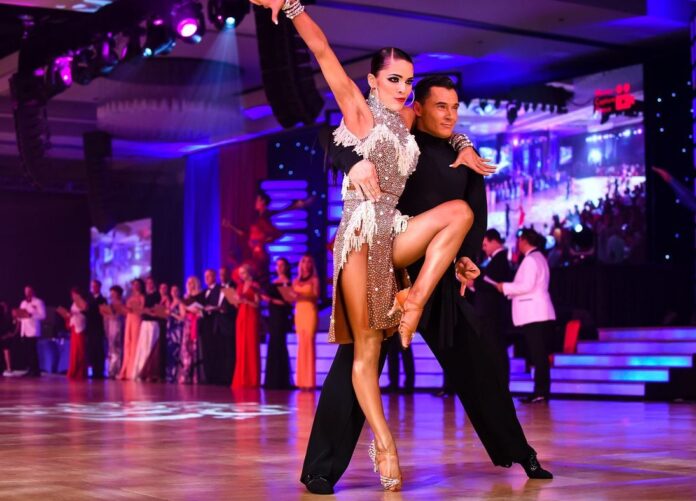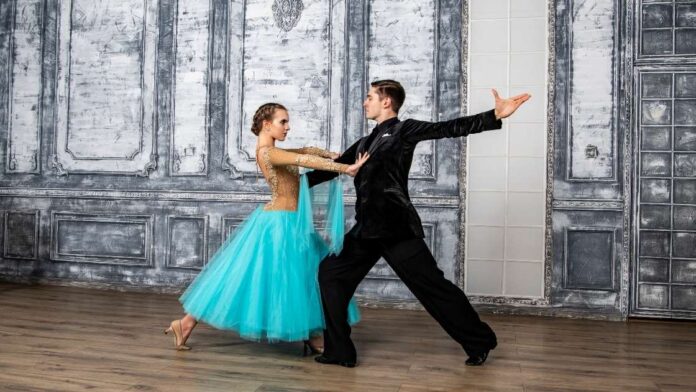Dancing is a beautiful blend of art and athleticism. It requires not only talent and practice but also the right equipment. Among the various tools dancers rely on, dance shoes are arguably the most crucial.
They are more than just footwear; they are an extension of a dancer’s body, providing the support, flexibility, and protection necessary to perform.
Let’s explore why these are so important and how they contribute to a dancer’s performance and health.
They Enable Enhanced Movement and Flexibility

Dance shoes, such as latin ballroom dance shoes, are designed to enhance a dancer’s ability to move gracefully and with precision. Unlike regular footwear, dance shoes offer a level of flexibility that allows dancers to point their toes, perform intricate footwork, and execute a wide range of movements with ease.
The materials used in them, such as soft leather, canvas, and satin, contribute to this flexibility, allowing for a greater range of motion.
Improved Traction and Balance
Different dance styles require varying levels of traction. For example, ballet dancers need footwear that allows them to glide smoothly across the floor, while tap dancers require footwear that provides a good grip.
Dance shoes are designed with specific soles to meet these needs. The right amount of traction helps dancers maintain balance, perform spins and turns with control, and avoid slips and falls.
Support and Alignment
Proper alignment is crucial for dancers to avoid injuries and perform at their best. Dance shoes are crafted to support the arches and align the feet correctly. For instance, ballet pointe shoes provide the necessary structure to support one’s weight en pointe, while ballroom dance shoes offer cushioning and arch support to withstand long hours of dancing.
Protection and Injury Prevention

Dancing puts a significant amount of stress on the feet, ankles, and knees. Dance shoes come with built-in cushioning and shock-absorbing features to mitigate the impact on these joints. This is particularly important in high-impact dance styles like tap, hip-hop, and jazz, where jumps and rapid movements are common.
Preventing Blisters and Calluses
Ill-fitting footwear can cause blisters, calluses, and other foot problems that can hinder a dancer’s performance. Dance shoes are designed to fit snugly without causing discomfort. Materials like soft leather and padded linings reduce friction and protect the skin, allowing dancers to focus on their performance rather than foot pain.
Ankle and Arch Support
Many dance injuries stem from a lack of proper support. Dance shoes are designed to offer the necessary support for the ankles and arches. For example, ballet shoes have a reinforced toe box for pointe work, and jazz shoes have a split sole for enhanced arch flexibility and support. This support is essential for preventing sprains, strains, and other injuries.
They Boost Confidence

Wearing the right footwear can significantly boost dancer’s confidence. When dancers know they have the appropriate footwear, they can concentrate fully on their technique and performance. This confidence translates into better posture, more precise movements, and an overall improved performance.
Enhancing Aesthetic Appeal
Dance shoes also play a role in the aesthetic appeal of a performance. They complement the dancer’s outfit and contribute to the overall visual impact of the dance. For instance, the elegance of satin pointe shoes in a ballet performance or the shine of patent leather in ballroom dance adds to the audience’s experience and the dancer’s sense of pride.
Psychological Comfort
Comfort is not just physical but also psychological. Knowing that their footwear is designed for their specific dance style gives dancers peace of mind. This psychological comfort allows dancers to immerse themselves fully in their performance, reducing anxiety and enhancing their focus.
Types of Dance Shoes and Their Importance

1. Ballet Shoes
Ballet shoes are lightweight and flexible, designed to support a dancer’s technique and movement. There are two main types: soft ballet slippers and pointe shoes. Soft ballet slippers are typically worn by beginners and are made of canvas or leather with a thin, flexible sole.
Pointe shoes, worn by advanced dancers, have a reinforced toe box and a stiff shank to support the dancer’s weight on the tips of their toes.
2. Tap Shoes
These have a solid sole and metal plates attached to the toe and heel. These plates create a tapping sound when struck against the floor, which is integral to tap dance. The design of tap shoes allows for precise and clear sounds, helping dancers maintain rhythm and timing.
3. Jazz Shoes
Jazz footwear are versatile and flexible, with a split sole for enhanced arch support. They are typically made of leather or canvas and have a rubber sole that provides the right amount of traction. Jazz shoes are essential for the dynamic movements and quick changes in direction typical of jazz dance.
4. Ballroom Dance Shoes
Ballroom dance shoes are designed for various styles like Latin, salsa, and tango. They have a smooth sole for easy gliding and a snug fit to provide support and control. Men’s ballroom footwear often has a low heel, while women’s footwear has a higher heel to accentuate the movements.
5. Hip-Hop Dance Shoes
Hip-hop dance shoes, also known as dance sneakers, combine the support of athletic footwear with the flexibility needed for dance. They have a cushioned sole to absorb impact and a high-top design to support the ankles during vigorous movements.
How to Choose

The first step in choosing the right footwear is understanding the specific requirements of your dance style. Each style has unique demands, and the right shoe will enhance your performance and protect your feet.
Fitting and Comfort
Proper fitting is crucial for dance shoes. They should fit snugly without being too tight. It’s important to try on the footwear at the end of the day when your feet are slightly swollen to ensure a comfortable fit during performances.
Material and Durability
The material of the dance shoe affects its durability and flexibility. Leather shoes are durable and offer good support, while canvas shoes are more flexible and lightweight. Consider the intensity of your dance style and choose a material that can withstand wear and tear.
Consult with Professionals
If you’re unsure about which footwear to choose, consult with your dance instructor or a professional fitter. They can provide valuable insights based on their experience and help you find the perfect pair of shoes.

The Bottom Line
Dance shoes are essential tools that enhance performance, provide support, and prevent injuries. They cater to the specific needs of different dance styles, offering the flexibility, traction, and comfort that dancers require.
Choosing the right footwear and maintaining it properly is crucial for every dancer, from beginners to professionals.








